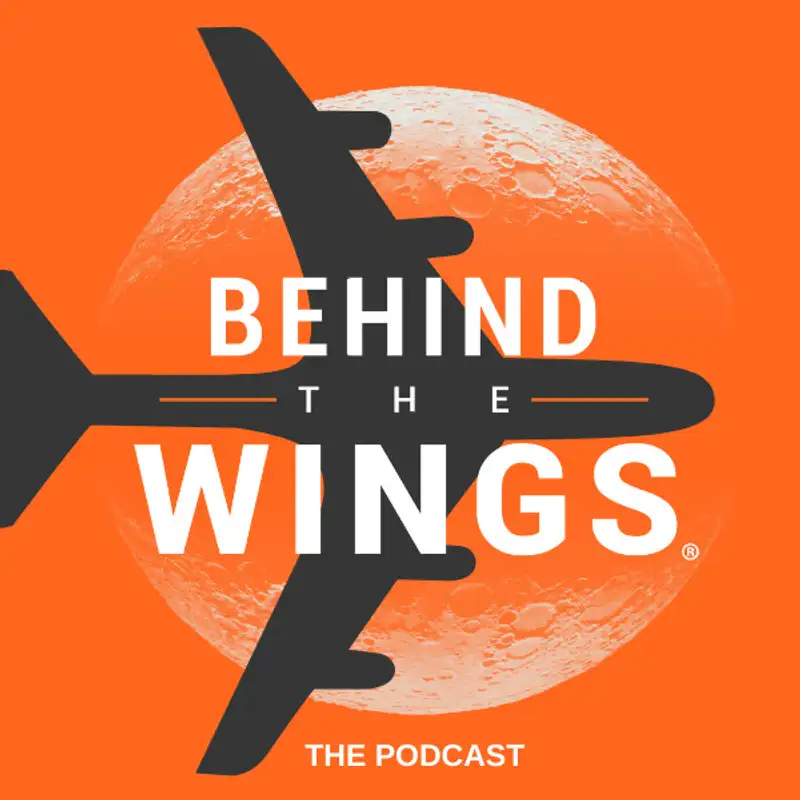Episode 15 - Accessibility in Space Exploration
Mission: AstroAccess - a crew of disabled scientists, aerospace professionals and artists based in America - is planning their second mission to explore how different people navigate space travel.
There’s space for everybody.” But we know little about how differently-abled people will respond to low-gravity environments and the unique challenges that can arise in human space flight.
Mission: Astro Access - a crew of disabled scientists, aerospace professionals and artists based in America - is planning its second mission to explore how different people navigate space travel. What challenges arise, and surprisingly, what advantages might different abilities have?
Our guests today are Eric Ingram and Lindsay Yazzolino. Eric, a wheelchair user, and Lindsay who is blind are two of the crew members who set out to find answers to these questions on board Mission: Astro Access's parabolic flights where they experienced zero gravity, and gravity-simulating the moon and Mars.
On the mission, the ambassadors will explore questions like: How would you navigate if the lights went out on your spacecraft? How would you communicate if it's too loud to hear?
The experiments on Astro Access will benefit all future explorers, as the learnings are passed onto players in the space industry, making spacecraft and space stations safer, easier to navigate and adaptable to the diversity of humans who will one day visit, live and work in space.
Key Takeaways
- Mission Astro Access is a project dedicated to promoting disability inclusion in space exploration by paving the way for disabled astronauts in science, technology, engineering and math. In turn, they are making space accessible for everyone.
- Astro Access completed its second mission in November of 2022, where they launched disabled scientists, veterans, students, athletes and artists on parabolic flights. They conducted experiments in weightlessness, lunar gravity, martian gravity and zero gravity.
- Eric Ingram is the founder and CEO of SCOUT Inc. a smart satellite components company. He uses a wheelchair and flew on Astro Access 1 and 2.
- Lindsay Yazzolino is a totally blind nonvisual designer who currently works as a user experience designer at CVs Health. Linday flew on Astro Access 2.
- NASA is sending astronauts back to the moon and commercial space flight is growing. We are well past the age where only military fighter pilots are becoming astronauts. It is only a matter of time until space flight is a part of human civilization says Eric.
- Lindsey's experiment on Mission 2 involved designing and testing tactile decals for the inside of the aircraft. The main decal is a tactile V to help people orient themselves non-visually. Other decals included tactile symbols for oxygen masks and other emergency equipment.
- Eric describes microgravity as alien. You don't have the buoyancy of water holding you up. You don't have air rushing by your face as if you were jumping out of a plane.
- Lindsay recalls martian gravity as feeling as if the plane was moving around her.
- All Astro Access experiments lead to solutions that are applicable for and can benefit all human space flight. If lights go out on a spacecraft, you will need a way to navigate. If you get injured or grow old in space, you will need ways to adapt to that new physical reality.
- The conversation of accessibility in space is well underway due to Astro Access' initiatives and the support of several commercial space flight companies.
Resources
- Astro Access on Radio Lab! The Right Stuff (radiolab.org)
- NASA on Astro Access: NSF Live: AstroAccess - Advancing Disability Inclusion in Space Exploration - YouTube
- Astro Access on BBC: Access All: Disability news and talk: 'It was magical' - the first disabled crew to fly in zero-gravity on Apple Podcasts
- Astro Access Website Ambassadors2 - AstroAccess
- The Verge: The mission to break barriers to space travel for people with disabilities
- NYT on Astro Access https://www.nytimes.com/2021/10/22/science/astronauts-disabilities-astroaccess.html
